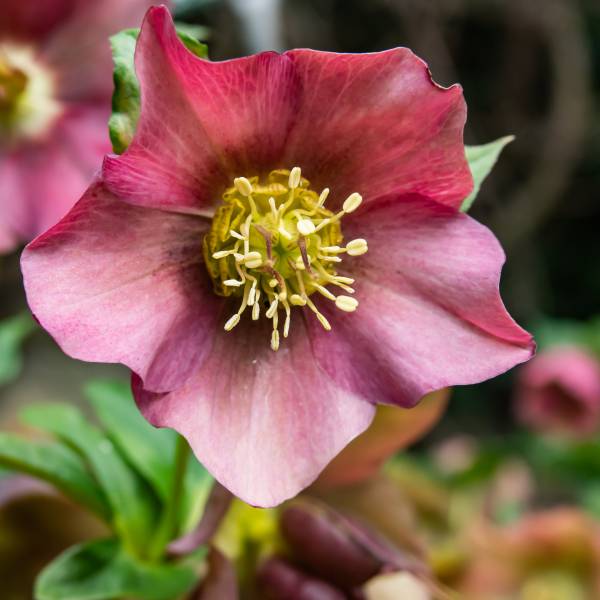
As the days lengthen and winter begins to (begrudgingly this year) release its grip on us, our gardens start to slowly awaken and exhibit signs of life. Among the vast number of spring blooming plants, hellebores are considered one of the aristocrats of the woodland garden. Very often the melting snow exposes buds already pushing through the soil in March. Their rose shaped blossoms open in shades of white and cream, soft yellows, pinks, burgundies and near blacks. The flowers may be single or double and can last on the plant for up to several weeks. Even when the plant is out of bloom the palmate evergreen foliage is attractive and provides winter interest.
Hellebores have recently been the focus of several breeding programs. Many of the newer introductions are seed strains so there can be a slight variation in the plants. Blue Lady is a seed strain featuring consistently colored dark plum single blooms. The Winter Jewel series features doubles in selected individual colors. With Royal Heritage, plants produce single blooms in a wide array of colors while Brandywine yields a mix of both color and form. So if color matters, it is best to purchase these plants when in bloom. There are also strains propagated by tissue culture resulting in plants which are identical to the parent. These varieties include ‘Ivory Prince’, ‘Penny’s Pink’, and the white flowering ‘Jacob’.
Hellebores are very undemanding once established. They prefer a rich soil in part to full shade, although they will bloom better with some filtered sun. The evergreen foliage may become unsightly in the cold weather so older leaves can be cut back when the snow melts, allowing a better display of the blooms. The plants, which resent being disturbed, can be slow to size up but will eventually form quite sizeable clumps. They can be displayed quite effectively when placed on a slope because the blossoms tend to face down. And to top it all off, they are resistant to being browsed by deer and rabbits.









